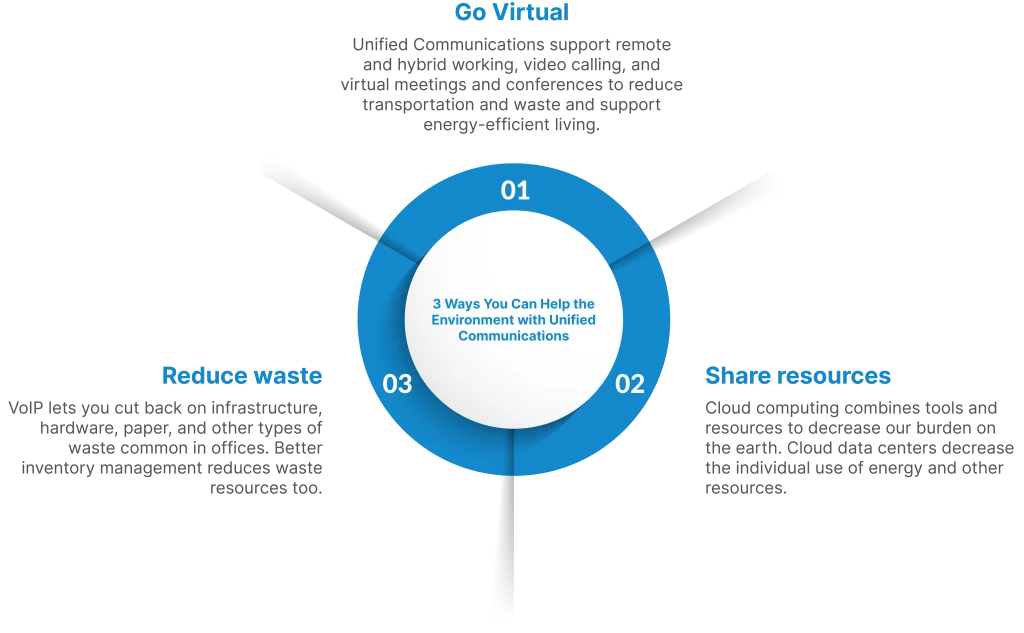The Information and Communications Technologies (ICT) industry contributes a staggering 1.8-2.8% of global greenhouse gas emissions, according to research from 2020, and this is estimated to reach 830 million metric tons of CO2 by the year 2030 (source). To put this into context, these numbers are comparable to the aviation industry.
In 2015, at the United Nations Climate Change Conference, The Paris Agreement was forged as a step to combat climate change, setting the goal to “substantially reduce global greenhouse gas emissions to hold global temperature increase to well below 2°C above pre-industrial levels and pursue efforts to limit it to 1.5°C above pre-industrial levels” (source).
As participants and leaders in the ICT industry, we have a responsibility to do our part to meet these goals and decrease our greenhouse gas emissions. We should expect increasing government regulations and pressure from our customers and peers in the industry to do our part in the fight against global climate change.
Unified communications and cloud computing emerge as environmentally-friendly solutions that can decrease the carbon footprint for your company and customers.
Embrace this green technology to not only do your part for the earth, but also to set your company apart as a responsible leader and elevate your reputation and marketing platform. Giving priority to environmental-friendliness often has favorable effects in other areas of a company as well, like reducing costs and increasing efficiency and productivity.
The Environmental Impact of Traditional Communications Systems
Traditional phone systems and plain old phone systems (POTS) utilize more resources and energy than modern alternatives, leading to a larger carbon footprint.
Operating equipment and power consumption
Running over dedicated circuits, traditional phone systems necessitate the use of limited resources like copper wiring and phone cables. And much more significant than the materials themselves, the construction of these systems involves manufacturing, transportation, and installation which all use up energy and create waste and pollution.
Excessive waste
Traditional phone systems utilize hardware that needs to be replaced frequently. As systems are changed or updated, the existing hardware goes to waste. Traditional telephones and other handsets become obsolete relatively quickly which is not a sustainable approach to communications.
Hardware-dependent solutions
Many traditional communications systems depend on dedicated hardware for each mode of communication. For example, traditional faxing requires a dedicated fax machine that needs to be manufactured, maintained, and eventually upgraded. Projectors are used to share materials during conferences or meetings. So much of this hardware ends up in a landfill.
VoIP and Unified Communications as a Green Solution

VoIP, and particularly unified communications (UC), emerge as solutions to decrease our carbon footprint, the emission of greenhouse gasses, and the waste of resources.
Combine resources
By definition, unified communications combines a variety of communication and collaboration tools into one solution. This in and of itself is a step toward a greener solution. Consolidating services like voice, meeting, video, instant messaging, and more into one application decreases the number of service providers, devices, and equipment using energy and resources. By becoming a one-stop-shop for your customers, you simplify and decrease their usage of resources and energy.
Virtual meetings
It is easy to see how shifting from in-person meetings to virtual gatherings is good for the environment. With fewer people driving and less air travel, fuel consumption and greenhouse gas emissions are reduced. In-person meetings typically involve other types of waste as well , such as printouts that waste paper, plastic water bottles or styrofoam coffee cups, and disposable food containers.
All of these things are completely negated when meetings go virtual and participants remain in their existing environments. gloCOM Meeting is an example of a feature-rich virtual meeting solution, enabling communication with face-to-face quality but no waste.
Remote workers
We can take these changes a step further by keeping employees at home as often as possible. In addition to decreasing the commute and its corresponding consumptions, working from home reduces the need for physical offices. In turn, this decreases energy spent on electricity, heat or air conditioning, Internet, and so many other resources that run large office spaces.
You can support the work-from-home movement both in your own organization and that of your customers. Your unified communications solution should have all of the tools necessary to support team collaboration and productivity from anywhere with an Internet connection.
Reduction in paper waste
Among the many tools in a comprehensive unified communications solution are Fax over IP (FoIP), file share, and screen sharing. These tools swap out physical documents for virtual ones, reducing wasted paper. Our unified communications app, gloCOM, supports faxing right from your computer or cellular phone, file sharing via individual or team chat, and screen sharing on voice calls, meetings, and video conferences. Minimizing the use of paper is such a simple, easy way to contribute to decreasing greenhouse gas emissions.
Inventory
Pursuing higher efficiency in inventory management can decrease waste and excessive energy use. A unified communications solution can enable better organization and bridge the communication gap between managers, warehouses, and third-party suppliers to avoid miscommunications or unneeded orders and deliveries. This reduces wasted supplies and ultimately contributes to fewer trucks on the road.
Less infrastructure
VoIP solutions can use existing infrastructure and equipment, negating the need for new physical products and the increased burden that would have on our environment. As systems are changed, updated, and maintained, the changes will be intangible with the same hardware and infrastructure used for years.
The majority of greenhouse gas emissions in the ICT sector are attributed to user devices (source), something completely out of our control. But offering solutions that support Bring Your Own Device (BYOD) options can help decrease the number of user devices out there.
The Role of Cloud Computing in Sustainability
Migrating to the cloud takes the green power of unified communications and VoIP one step further. Cloud computing increases efficiency and decreases waste.
Shared resources
The number one way that the cloud decreases the environmental burden of our communications is by consolidating and sharing resources. Cloud service providers utilize one data center for many users, thus sharing the energy and resources used between a much larger population. This allows users to spend far less on energy, on-site maintenance, and equipment.
Many cloud service providers are already taking steps to make their data centers more green, and if they are not, they will probably be held responsible by increasing legislation in the coming years. Partnering with a cloud provider takes that burden off the user and supports change at a higher level.
Scalability
Another key way that cloud communications supports the environment is by supporting seamless scalability. As businesses grow, they will not need to upgrade their infrastructure and equipment, meaning no need for manufacturing or a visit from a deployment team.
In the same way, businesses can scale their solution down when necessary so resources are not wasted. This ability to scale up and down ensures maximum efficiency to diminish the environmental impact wherever possible.
Remote management and updates
Maintenance and upgrades to cloud solutions can be done completely remotely, and often very quickly, so that minimal resources are spent on the process. No support team or maintenance workers will be required on-site, eliminating the need for travel and all that entails.
What Else You Can Do
In addition to offering unified communications and cloud solutions that support all of the benefits mentioned previously, there are other practical steps that your organization can take to decrease your carbon footprint.
Be responsible with hardware
You can avoid unnecessarily upgrading hardware for yourself and your customers. Whenever necessary, continue using existing handsets through changes in software and upgrades. If older hardware must be replaced, research how to recycle or reuse it. There are companies that will refurbish old handsets or repurpose their parts, avoiding more plastic in the landfills.
Decrease employee travel and commuting
Use your unified communications solution to allow your own team to work from home whenever possible. Of course some commuting and travel will always be necessary to support a productive workflow and positive human connections, but you can be wise and responsible in decreasing unnecessary travel wherever possible.
Future Trends and Innovations
As new technologies and innovations emerge in our industry, we will be able to decrease our carbon footprint even more. Partner with an industry leader like Bicom Systems to gain early access to emerging green technologies.
Renewable resources
Powering our solutions with renewable solar energy or wind would make them even more environmentally-friendly. As these options become increasingly accessible, we must prepare to embrace and encourage them in our users.
Artificial Intelligence
The trendy topic of Artificial Intelligence (AI) has its place in the sphere of preventing climate change as well. A recent study from Allianz found that “AI could help reduce global GHG emissions by around 1.5-4.0% by 2030 via productivity and efficiency gains” (source). AI is already highly present in the communications industry and we are constantly researching new ways to incorporate it into our solutions.
Bicom Systems Leads The Way
The present level of greenhouse gas emissions is concerning and provokes a sense of urgency. Even the smallest industry player can play a part in change by adopting some of the practices and solutions listed above.
If you would like to get started with Bicom Systems, please contact us today.

